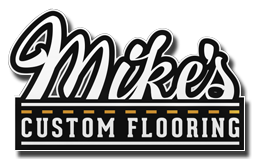When hardwood floors are installed, often the wood floor will transition to another flooring material such as carpet or tile leading into another room. When wood floor connects to another room or material, it is essential to use transition molding. For those unfamiliar with transition molding and its purpose, Mikes Custom Flooring will explain what transition molding is, how it is used, and why it is so essential with wood floor installation.
Is Transition Molding Necessary Between Rooms?
The transition molding isn’t just to help make the transition from one flooring material to another look smoother. It also has a number of practical uses. Transition molding is used for horizontal flat floors transitioning to vertical edges such as stairs, a change in height, or simply to separate one room from another. At the same time, it gives them a clean and protective edge when the floor ends. The transition molding material or design can vary by installer or what the homeowner may select. Essentially, transition molding protects the edge of the wood floor, helps prevent tripping and provides an aesthetically pleasing transition from one floor material or room to another
Transition molding have many uses during installation or on the flooring design. Transition molding is used for stair nosing, which is where the two edges of the step and the siding meets. To protect the edges of the two pieces of wood, and wood round the edges, an “L” shaped transition molding or a flat but rounded piece of molding that covers the edge is either glued or nailed down. The two types of transition molding used for stair nosing are referred to as Flush or Overlap. In most situations the flush transition molding is preferred by most installers.
When to Use T Molding or Reducer
Transition molding is also used when the floor transition to different heights. When the wood floor is lower or higher than the connecting floor, such as tile, carpet, or another wood flooring material, there is often a slight height adjustment needed. To help make the transition from an un-level floor smooth and to prevent tripping, a “T” molding is used. A piece of “T” molding looks like a “T.” However, the top of the “T” or the flat part or the exposed part of the molding and the bottom line of the “T” are glued or nailed down to the sub-floor or foundation to hold the molding into place. Transition “T” molding is frequently used for flat or level flooring that connects to other materials or adjoining rooms. They help make the transition look cleaner, protect the edges of the wood floor, and again, prevents tripping. Especially for laminates with the click in installation system, it is essential to use a transition molding to prevent the edge board from separating.
Baseboard Molding Styles
Another molding used for wood floors, but not for transition areas, is baseboard molding. They too play a vital role for wood flooring. You will see Quarter-round or Base-shoe baseboard molding used around the edges where the wall and the wood meet. They help prevent the wood floor from getting a gap or buckling as the wood expands and contracts. Expanding and contracting will happen throughout the years and as the seasons change. However, without the baseboard as the floor expands or contracts, the wood can separate or buckle which ruins the floor.
Hardwood Floor Installation, Refinishing & More in Charles Town & Eastern Panhandle of Berkeley & Jefferson Counties in WV | Winchester & Frederick County | Round Hill & Loudoun County | Berryville & Clarke County | Herndon & Fairfax County VA
If you’re looking to install hardwood floors in your home, contact Mikes Custom Flooring for quality materials, and installation services. Schedule our services by contacting Mikes Custom Flooring today!





